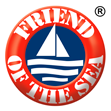سرطان البحر
Leigh Fisheries
Species scientific names: Jasus edwardsii, Jasus verreauxi
FAO area: 81
Fishing method: Pot
Basic description of the fleet/fishery
Fishery client: Leigh Fisheries.
Fishing area: FAO 81; Pacific, Southwest – FMA Area 1, 2 and 9.
Fishing vessels: The Company has a fleet of 55 vessels.
Vessels audited on site as fleet samples: 900855; 15878; 2024; 5876.
Fishing method: Pot.
Certified species: Scientific name / Common name
Jasus edwardsii / Red rock lobster
Jasus verreauxi / Packhorse rock lobster*
Management summary
The Ministry for Primary Industries (MPI) manages New Zealand’s fisheries under a national fisheries plan. The cornerstone of New Zealand fisheries management is the Quota Management System (QMS). The rock lobster fisheries were brought into the QMS in 1990, when Total Allowable Commercial Catches (TACCs) were set for each Quota Management Area (QMA). All vessels maintain a logbook. A Catch Landing Return (CLR) is recorded at every trip, indicating the target species and bycatches. CLR is delivered to the MPI office at the 15 of every month and it is matched with the declaration of the Licensed Fish Receivers.
Stock status summary
According to the MPI, Red rock lobster is reported as not overexploited and overfished. Packhorse rock lobster fishery is monitored by MPI, but the status of its stock is unknown.
Bycatch / discards
Bycatch is very low and it is mainly linked to other fishing methods of the fleet. Pots are thought to have little direct effect on non-target species. There are no discards, since the unit of certification markets all catches. All bycatch is recorded on the CLR.
Habitat Impact
The ecosystem impact of the fishery is taken into account in the assessment carried out by MPI. The institution also specifies and monitors the mesh size of pots, stipulated by fisheries legislation. Pots are set with attention with negligible impact on seabed.
Social Accountability performance
The fleet complies with the human rights and labour regulations of New Zealand.
Conclusion with reasons for approval
The fleet complies with Friend of the Sea requirements, without any non-conformities.
* The species is now placed in the genus Sagmariasus.
CRAMAC 5 Association
Species scientific name: Jasus edwardsii
FAO area: 81
Fishing method: Pot
New Zealand – Pot – Jasus edwardsii – FAO 81 (Pacific, Southwest)
Fishery client: CRA 5 Rock Lobster Industry Association Incorporated (“CRAMAC5”).
Fishing area: FAO 81, Canterbury/Marlborough known as CRA5.
Fishing vessels: The Company has a fleet of 26 vessels.
Vessels audited on site as fleet samples: 70894; 901093; 901176; 44197; 900734; 63064.
Fishing method: Pot.
Certified species: Scientific name: Jasus edwardsii;
Common name: Red Rock lobster.
Management summary
The Ministry for Primary Industries (MPI) manages New Zealand’s deepwater fisheries under a national fisheries plan. The Rock lobster fisheries operates within the New Zealand Fisheries Act (1996), which fully encompasses the legal and administration framework for fisheries management, licensing of commercial operations, and contains provision for Quota Management System (QMS), compliance monitoring and enforcement. Size limits for Rock Lobster are specified in the Fisheries Regulations 2001 (SR 2001/253). The minimum tail width regulation specifies 60mm for females and 54mm for males. Under the QMS a yearly catch limit – the total allowable catch – is set for every stock. MPI rigorously monitors the amount caught compared to set catch limits with financial penalties for commercial fishers who catch more than their entitlement in a year. The company is operating with a catch certificate issued by MPI.
Stock status summary
There is a substantial amount of data on Rock Lobster collected by the New Zealand Seafood Industry Council (SEAFIC) and the New Zealand Rock Lobster Industry Council (Rock Lobster Industry Council), in conjunction with the Ministry of Primary Industry (MPI) and Government Research Agencies. These data show that stock and fishing intensity are deemed to be well below the maximum rate of fishing mortality (Fmsy), indicating that the stock is not overexploited. Thus, stock is assessed to be above the biomass that enables a fish stock to deliver the maximum sustainable yield (Bmsy), confirming that the stock is not overfished.
Bycatch / discards
Bycatch information is collected on the Catch Effort Landing Return (CELR) forms and the company developed log sheets. The normally bycaught species are not on the IUCN Red List as endangered. Bycatches are at extremely low levels.
Habitat Impact
Marine Protected Areas are clearly identified on maps that are pre-programmed into Vessel Monitoring System (VMS) and/or Global Positioning System (GPS). Warning systems prevent vessels drifting into these areas. Potting is a benign fishing method and has minimal impact on the seabed.
Social Accountability performance
The fleet complies with the human rights and labour regulations of New Zealand.
Conclusion with reasons for approval
The fleet complies with Friend of the Sea requirements, without any major non-conformities.



